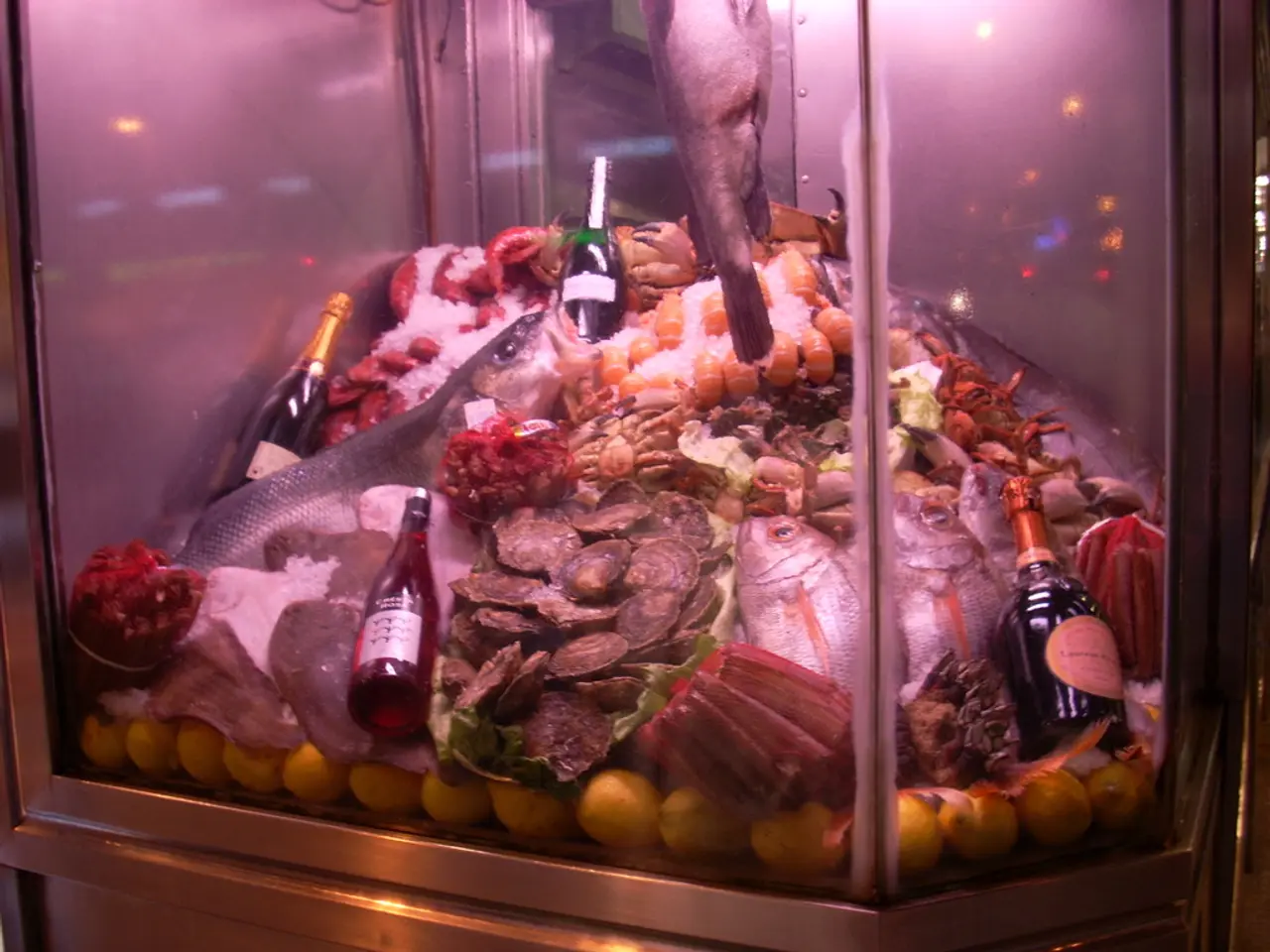Addressing the Issue of Marine Pollution: Collaborative Effort to Remove Plastic Debris from Oyster Farms in Hiroshima Bay's Aquaculture Industry
In the heart of Japan, the Seto Inland Sea has been grappling with environmental challenges, particularly marine debris. One significant pollutant in this region is polystyrene floats, often used in oyster farming and fishing industries. To combat this issue, the Setouchi Oceans X project was launched in December 2020, a collaboration between four prefectures and the Nippon Foundation.
The project aims to reduce marine waste and foster sustainability in the Seto Inland Sea region. While specific details on the scope or outcomes from 2025 are not readily available, it's clear that the initiative includes cleanup activities, community engagement, and promoting alternatives or recycling of polystyrene materials.
Hiroshima Prefecture, known for its extensive oyster aquaculture, has been particularly affected by the problem of polystyrene floats breaking loose and contributing to marine pollution. Local governments and NGOs have been actively working towards retrieval and recycling programs to mitigate this issue.
On July 5, 2021, a large-scale cleanup effort took place in the four prefectures, with around 1,000 participants collecting approximately 26 tons of waste. In Hiroshima Prefecture, a pilot project has been launched, installing 1,000 new floats on 30 aquaculture rafts for monitoring. These newly developed floats by Oceans X are 1.2 times denser, making them more resistant to compression underwater, and equipped with metal tags for identification and tracking using radio frequency identification technology.
The protective covers developed by Oceans X are three times more tear-resistant compared to standard lightweight products, helping to extend the floats' service life. The hope is that this initiative will serve as a model for aquaculture communities both in Japan and around the world.
Unno Mitsuyuki, executive director of the Nippon Foundation, expressed hopes that the project will succeed and be adopted in other regions facing similar issues. The Oceans X initiative aims to recover the remaining 86 tons of waste and establish systems to prevent waste generation.
The media were invited to observe the installation of the new floats at an oyster farm in Hiroshima Bay on July 15. Photos were taken during the float replacement process. Yoneda Terutaka, the head of the Hiroshima Fishery Cooperative, expressed commitment to reducing float waste and passing on the delicious oysters of the Seto Inland Sea to future generations.
While the exact impact of the Setouchi Oceans X project on the reduction of marine waste and the health of the Seto Inland Sea is yet to be fully understood, it's clear that this initiative is a significant step towards a cleaner, more sustainable future for the region. For the latest updates and quantitative data on the project's progress, it's recommended to consult official project reports from environmental agencies in Hiroshima Prefecture, related Japanese government environmental ministries, or local news focused on Setouchi marine conservation.
- The Setouchi Oceans X project, a collaboration between four prefectures and the Nippon Foundation, strives to reduce marine waste in the Seto Inland Sea region and promote sustainability.
- The initiative includes cleanup activities, community engagement, and promoting alternatives or recycling of polystyrene materials.
- Hiroshima Prefecture, known for its oyster aquaculture, is particularly affected by the problem of polystyrene floats contributing to marine pollution.
- On July 5, 2021, a large-scale cleanup effort took place in the four prefectures, with around 1,000 participants collecting approximately 26 tons of waste.
- Unno Mitsuyuki, executive director of the Nippon Foundation, hopes that the project will succeed and be adopted in other regions facing similar issues, aiming to recover the remaining 86 tons of waste and establish systems to prevent waste generation.
- Yoneda Terutaka, the head of the Hiroshima Fishery Cooperative, expressed commitment to reducing float waste and passing on the delicious oysters of the Seto Inland Sea to future generations.




